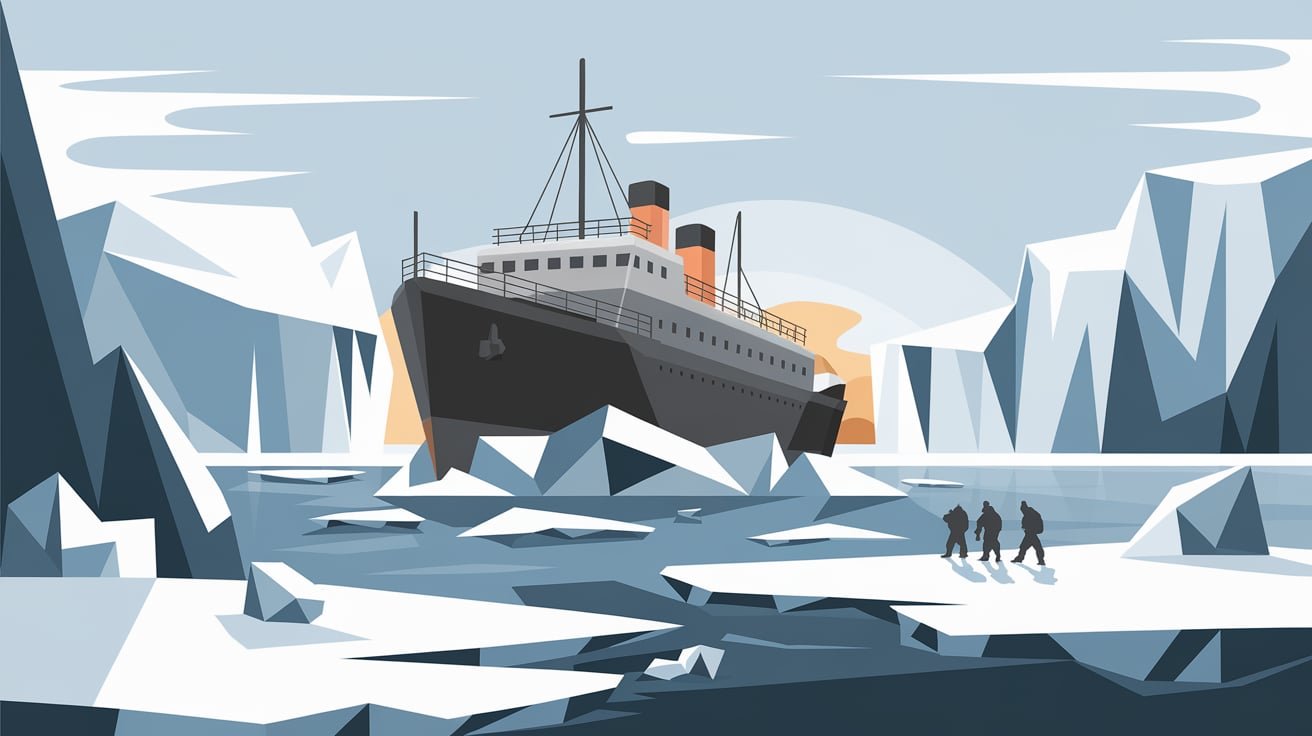
Endurance: Shackleton’s Antarctic Survival Story – Leadership and Resilience in Extreme Conditions
Discover the Greatest Survival Story in History
What does it take to lead a team through unimaginable hardship, stranded in one of the harshest places on Earth? This is the question that Sir Ernest Shackleton answered with his epic Antarctic expedition aboard the Endurance. Chronicled in Alfred Lansing’s Endurance: Shackleton’s Extraordinary Voyage, this incredible tale of survival and leadership remains one of history’s most compelling narratives, with lessons that resonate across centuries.
In this article, we dive into Shackleton’s journey, explore his leadership approach, and uncover insights that can inspire modern leaders and adventurers alike.
The Age of Exploration: Shackleton’s Vision and Ambition
In the early 20th century, the world was witnessing the Golden Age of Exploration. From polar expeditions to pioneering aviation feats, humanity was pushing boundaries like never before. Amid this wave of discovery, Shackleton embarked on his boldest mission yet: the first transcontinental crossing of Antarctica.
The Vision Behind the Expedition
- The Goal: Shackleton planned to traverse the entire Antarctic continent, a feat as ambitious in 1914 as landing on the moon was in the 1960s.
- The Ship: The Endurance, a state-of-the-art vessel, was designed to withstand the harshest polar conditions with its reinforced oak hull.“The ship was a masterpiece of engineering, akin to today’s space exploration vehicles.”
Despite its advanced design, the Endurance would face nature’s overwhelming power in the icy Weddell Sea.
Ernest Shackleton: A Leader Like No Other
Born in Ireland in 1874, Shackleton’s adventurous spirit was evident early on. He joined the merchant navy as a teenager, rising quickly through the ranks. By the time of the Endurance expedition, Shackleton had already distinguished himself in Antarctic exploration.
What Made Shackleton’s Leadership Unique?
- Visionary Thinking: Shackleton constantly pushed the boundaries of exploration, turning even setbacks into triumphs.
- Empathy and Morale: He understood that the psychological well-being of his crew was as vital as their physical survival.
- Adaptability: Shackleton’s ability to pivot plans during crises ensured the survival of his team.
His leadership style remains a gold standard, studied by corporate leaders, military strategists, and historians alike.
Into the Ice: The Voyage of the Endurance
The Endurance set sail from London in August 1914, just as World War I broke out. Shackleton and his crew of 28 braved the dangers of the Atlantic and South America’s icy waters, finally entering the Weddell Sea in December.
Disaster Strikes
By January 1915, the Endurance was trapped in thick pack ice, unable to move. Shackleton and his crew faced a sobering reality: they would have to endure the Antarctic winter stranded on a frozen sea.
Survival Mode: Shackleton’s Crisis Leadership
When it became clear that the Endurance could not be saved, Shackleton shifted his focus entirely to survival. This period highlighted his extraordinary leadership and resourcefulness.
Key Survival Strategies
- Resourcefulness in Food: The crew hunted seals and penguins to stave off starvation. Shackleton ensured they preserved seal livers for their critical vitamin C content to prevent scurvy.
- Maintaining Routine: Daily schedules, including chores and organized games, kept morale high during months of isolation.
- Adapting to Conditions: When darkness fell during the polar night, the crew’s creativity and discipline ensured their survival.
“Shackleton’s ability to unite and inspire his team, even in the bleakest circumstances, is a masterclass in leadership under pressure.”
Abandoning Ship: A Turning Point
By October 1915, after months of relentless pressure, the ice crushed the Endurance, forcing the crew to abandon ship. Shackleton and his men salvaged what supplies they could and established camp on drifting ice floes.
For five harrowing months, the crew lived on the ice, drifting further from safety while braving temperatures as low as -40°F. Shackleton’s careful planning and constant encouragement kept hope alive.
A Bold Escape: Lifeboats to Elephant Island
In April 1916, the ice began to break apart, and Shackleton seized the opportunity to move. Using three lifeboats, the crew navigated through treacherous, freezing waters for five days, eventually reaching Elephant Island—a barren outcrop in the Southern Ocean.
But the Journey Wasn’t Over
- Elephant Island was uninhabited, offering no hope of rescue. Shackleton made the audacious decision to sail 950 miles to South Georgia Island in a 22-foot lifeboat, navigating some of the world’s most dangerous waters.
The Final Challenge: Reaching South Georgia Island
Shackleton and five crewmembers embarked on the perilous journey, facing hurricane-force winds, towering waves, and freezing temperatures. After 16 days, they reached South Georgia Island but landed on the wrong side, requiring an unprecedented trek across its glacier-covered interior.
Unimaginable Determination
With minimal gear and exhausted bodies, Shackleton and his men crossed the island’s mountainous terrain in 36 hours—a feat that would remain unmatched for decades.
The Rescue: Shackleton’s Ultimate Triumph
On August 30, 1916, Shackleton returned to Elephant Island with a rescue ship, saving all 28 crew members. Not a single life was lost, a testament to Shackleton’s leadership and the crew’s unwavering resilience.
“Shackleton’s extraordinary feat is more than a survival story—it is a lesson in hope, perseverance, and the power of leadership.”
Modern Lessons from Shackleton’s Leadership
Shackleton’s story offers timeless insights for leaders, adventurers, and anyone facing adversity:
Key Leadership Lessons:
- Adaptability: Be ready to pivot plans as circumstances change.
- Empathy: Understand the emotional needs of your team.
- Optimism in Adversity: Inspire hope even in the darkest times.
A New Chapter: Rediscovering the Endurance
In 2022, the wreck of the Endurance was discovered 10,000 feet below the Weddell Sea, remarkably preserved by the icy waters. This discovery reignited global interest in Shackleton’s story, ensuring his legacy endures for future generations.


